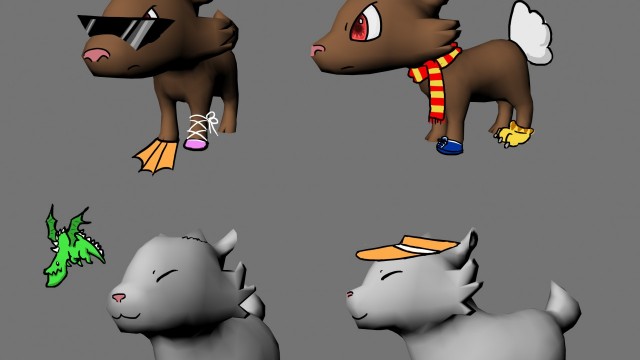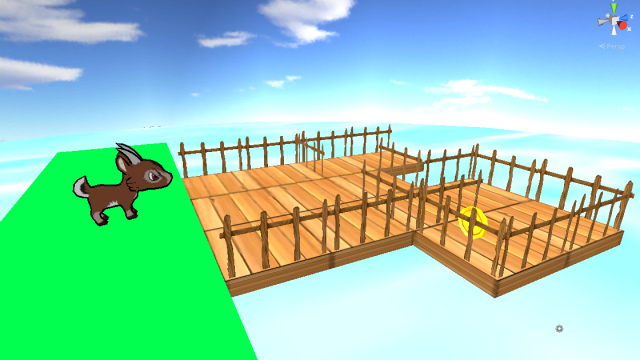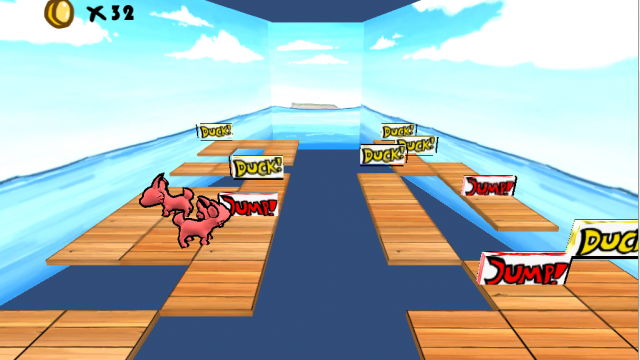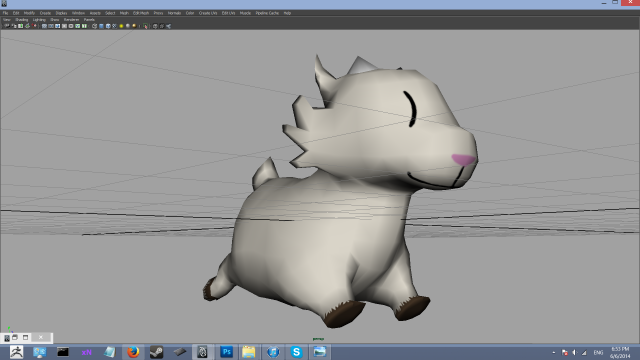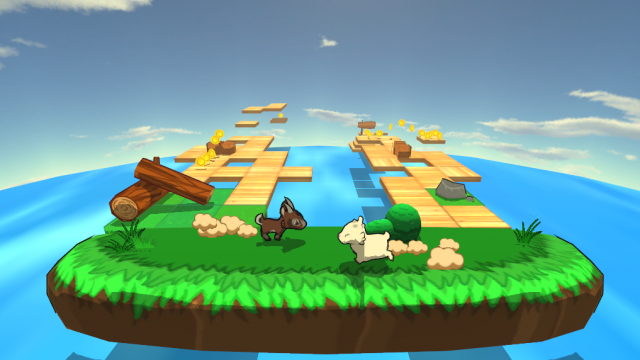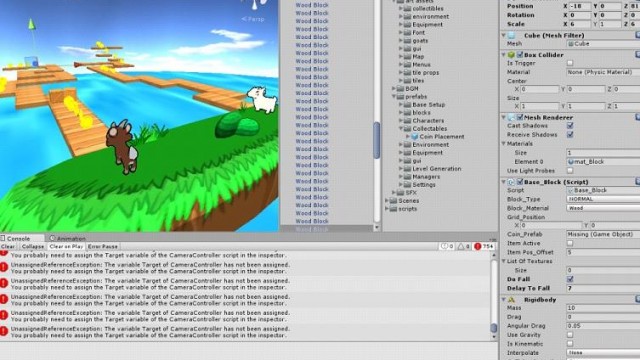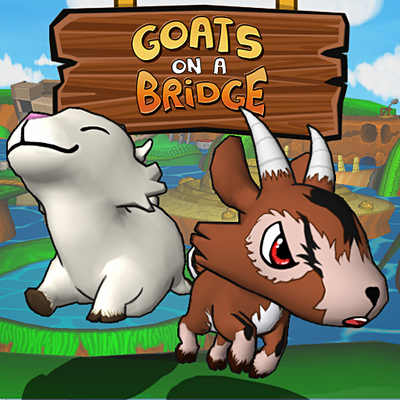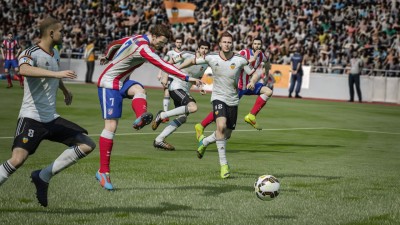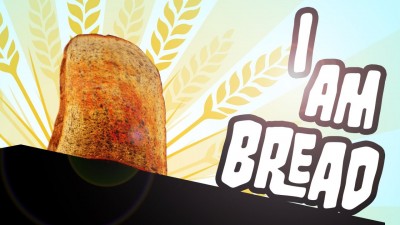I’m Cheryl, aka the devious mastermind, slavemaster and jack of most trades (minus coding, NEVER AGAIN) at Cabygon, and I’ll be your narrator for this long, long, long story about goats, indie game development contests, and the trials and tribulations of game development.
It’s been a pretty long time since the Indie Game Maker Contest. We’ve had our ups and downs since then, and are plodding along, working towards an eventual release of Goats on a Bridge, and that’s what I’m going to be prattling today.
‘Cause goats are awesome.
Conceptualizing Goats
So once upon a time, after finding out about the contest whilst browsing Humble Bundle in the middle of the night, I contacted Dexter, the coder, and Dominic, the 3D guy, to tell them about it. We had been talking casually about making a game for some time, but weren’t really getting around to it. This was the opportunity we needed to get into gear, so it called for an emergency hangout the following day.
At first we thought it was completely crazy to make a game in a month, but then again, why not? I ended up taking a month off work to commit myself to the contest, fully expecting to lose my job, but thankfully my bosses were supportive and gave the go ahead. Both Dex and Dom were fresh out of school (barely a couple of weeks, too!), so they didn’t have jobs or any other responsibilities to keep them away from making the game.
We started by thinking of a game mechanic. We wanted it to be unique and we eventually ended up with the one hand per character mechanic. The next part was coming up with a story. I knew I wanted to work on a fairy tale, something which anybody can relate to, but there are just so many out there about famous characters like Red Riding Hood, Three Little Pigs, yada yada yada.
It turned into a discussion about which stories don’t have a game made about them and then it hit me! The first book my mom ever got me was an interactive story book, it had buttons on the side that you could press, mash really, that would make noises. In case you haven’t guessed it by now, it was the Three Billy Goats Gruff.
We warped the story to be about the troll “kidnapping” the youngest brother and how you would play as his brothers going to the rescue, which fit perfectly with the one hand/one character mechanic.
Thus, that is how Tempo and Chubbs were born.
Developing Goats on a Bridge
We wanted to stand out and after heavy discussion we decided to take a risk and go full-on 3D with the game. We knew we had our work cut out for us as we only had a month, so we kept concepts and models as simple as possible, which eventually led to the extremely cutesy look of the game that you see now.
We also had a few problems with the bridges, initially there were railings on them, as we thought the game was too hard. We decided to get rid of them as they were causing some depth problems and confusion when we tried to jump.
Dex says: “Having limited experience with Unity, I did waste time creating unnecessary tools to help in the development of the game, such as making a 3D grid system that would position the tiles properly and ensure that the tiles are precisely side by side. The team soon discovered a built-in method to attach one side of an object to another.”
We also had a ton of bugs. when we initially set up the game, you were able to cheat and jump one goat to the other side. So to rectify that problem, we put in the dreaded invisible walls to restrict their movement. For areas where we couldn’t use the invisible walls, the tiles were coded to a specific goat, so if the other would try to cheat across, they’d fall right through the tiles.
We also realised that it’s a good idea to plan out features. Doing so helped us find the simplest solutions to several features. Throughout development, I had a bad habit of suddenly coming up with ideas I thought would fit. You could see Dex cringe every time I said, ‘GAIS! GAIS! I HAVE AN IDEA!’ since it added more things to his plate. It was usually followed with, “Do you think you can do it in the timeframe?”, Though he’d usually bite the bullet and go at it like a trooper.
Dom says: “It was pretty rushed since we only had one 3D guy but it really pushed me to work fast and try to maintain the art style depicted in the concepts. It was a great learning experience and good fun!”
Dom had to teach me how to do UV mapping, the process of unwrapping and ironing out a 3D model’s skin into a flat image so that you can paint on it and texture. This was so we could cope with the big workload and time constraints.
It was the craziest crash course ever, which yielded some really derpy results at the start. I had a lot of trouble trying to visualize how the skin would wrap around the model. You can see in the image below how Chubbs’ leg fluff was inverted on his hoof. Another common occurrence was his eyes being located in strange places!
We encountered several problems, especially when Dex went away for 10 days with his family. He gave me a second crash course over the span of two days. This consisted of Unity basics 101: how to create levels, objects, scenes, tiles and how to set them up. Some with ‘actions/commands’ attached to them, such as being able to set a timer to a tile to tell it when to fall. With that covered, he left us with “how to” notes and a worried frown. He had good reason to worry: artists taking over coding can be a very dangerous thing! It resulted in many hilarious glitches and strange mutations.
We thought it would be simple to do things following Dex’s crash course. When we tried to create the dust particle effect for the goats’ run, it resulted in the dust clouds firing out of Tempo’s face like lasers, which was both terrifying and hilarious.
Eventually we gave up trying to code since our attempts were resulting in more problems than solutions, so we moved on to finishing as many of the art assets as we possibly could. The few things we did set up correctly were the single-character camera and layouts. The single-character camera was necessary for levels 1 and 2 where the player learns to control each goat. Dex had taught me how to place tiles to create a level, so during the time he was gone we created all ten levels.
I did have fun hashing out all the levels, which I then sent over to a few good friends. I had them stream or Skype screen-share their playthroughs whilst I worked on other things at the same time. Whilst they play-tested, I got to witness some of the most interesting gamer reactions (A REAL LIFE TABLEFLIP amongst them) and a ton of foul-mouthery. I think they wanted to strangle me by the end of it.
The testing allowed me to actually see where bugs were and what they did, as well as gauging their reactions to certain obstacles during the levels. We could see if it was the kind of reaction we wanted from the player, and if it would impact on the level design. It was important that while the levels were difficult, they could be completed with X amount of deaths in progression. Using a little chart, I tallied the deaths and on another noted down the time it took to clear a level during a straight playthrough. This way we were able to find the average completion time and work out the 3 star rating for each level.
The Last 5 Days
Our valiant coder returned five days before the end of the contest. We greeted him with big smiles, warm hugs and a devilishly long list of things to fix/add.
Dex says: “The toughest part of the development was when I returned from my vacation to two grinning faces that promised retribution. It took five days to bug fix and add several features, including the collectables, audio and equipment. Having spent some time planning for the equipment system, we were lucky enough to get it up mere hours before the submission time.”
We camped out in my study (the US equivalent of working in the basement) for those last 5 days and got pretty tired and cranky. We were working late into each night and taking turns to have short naps. We’d even walk out in the middle of the night to grab a midnight snack just so we could stay awake.
By the 4th day, everything seemed kind of funny; it started feeling like hopeless desperation that we would finish the game in time. The most inane statement had us peeling in laughter for no apparent reason; I suppose that’s from the lack of sleep.
During the final hours, we gave it all we had. We worked up until the last hour before the deadline and decided that we couldn’t risk any more delays since we still had to export the game and upload it. We were cutting it really close and submitted the game - just a few minutes to spare.
After that, we all zonked out and slept half the day away before calling in pizza and hanging out on the PS3 in a rather celebratory mood for a job well done. That is, until we realized way past submission that we had submitted a lower quality version that was missing shadows, which caused the physics to go a little crazy without us realizing. We ended up uploading an updated version in the forums as a hotfix, but we were upset for making a mistake that could well have cost us dearly.
On Composing for Goats on a Bridge
Both composers, who are very good friends of ours, reacted much the same when asked to help out with the game - though in JP’s case it was more of a good sibling obligation (I love you too, bro). That was a joke – JP actually loves composing, and we’d wanted to do something like this together for a long time, though perhaps without the extreme time constraint.
JP says: “When Cheryl approached me to whip up some music and sound effects for the 2014 Indie Game Maker Contest, which stipulated a one month development deadline, I really could only bring one creative fuel to bear: last minute panic.”
“Most of the soundtrack was likely born out of some subconscious reaction to my hysterical state-of-mind. From screeching catharsis via a screaming goat sample, or a decidedly calming flute melody that I’d hoped would prove infectious as I hammered it out. In retrospect this is about as accurate as I can describe the ordeal; I had to take a week off work to subject myself to this, and I’d probably do it again. Self-flagellation is fun, so long as you have something to show for it at the end.”
On Composing the Chubbs’ Theme Song
Phyrnna says: “My inspiration during that month was Goats, BAAAAAAAH, ADD MOAR COWBELL, BAAAAAAAAAAAAHHHHHHHH!!!”
“But seriously, that was the mindset I had while writing the song. Silly goat videos and Goat Simulator helped too. I have a weird creative process mentally. I tried to stay away from llamas though. I didn’t want to llama-fy the song, as tempting as it was. I swear I’m not crazy!”
Final Thoughts
In conclusion, the Indie Game Maker Contest was a really great experience. We learnt many different things in a short amount of time whilst finding out how well we worked together as a team. Actually completing a project that we cared about was an amazing experience. It brought us closer together as friends and made us appreciate each other’s job scope a little more. It’s inspired us to take this one step further to keep working on Goats on a Bridge in order to publish it as a full-fledged title, under our Cabygon studio flag.
We hope you enjoyed reading this developer diary and thank you for holding on until the end - please look forward to it!

